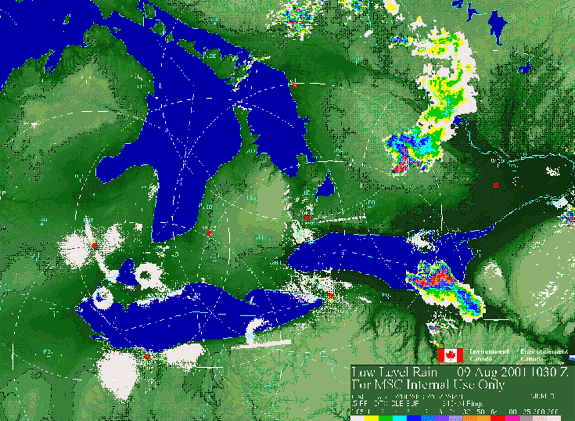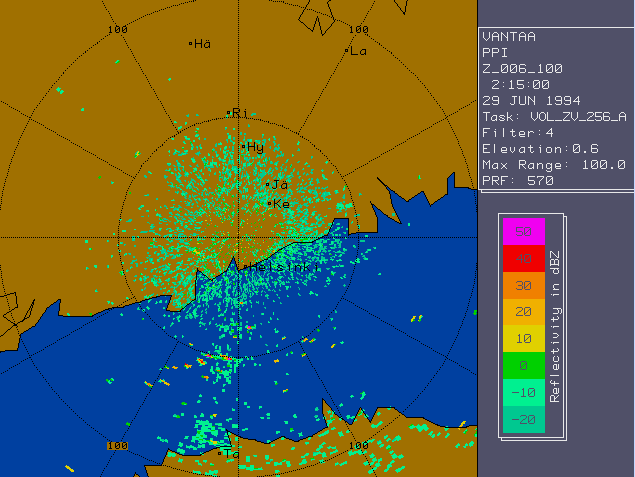Radar Meteorology Glossary
This glossary will be the main reference for radar products and problems and will give details on what the different products are and how they are used.
Browse the glossary using this index
Special | A | B | C | D | E | F | G | H | I | J | K | L | M | N | O | P | Q | R | S | T | U | V | W | X | Y | Z | ALL
B |
|---|
BackscatterThe portion of power scattered back in an incident direction. | |
Beam propagation changesProblemsVertical profiles of temperature, pressure and humidity affect radar beam propagation, especially when there is low elevation angle at the radar site. Actually, normal propagation conditions are dominant but there are also significant seasonal variations in the median and monthly dispersion of the vertical refrectivity gradient. | ||
BirdsProblems in Radar ProductsBird flocks look like precipitation on the radar picture, especially during migration. There are some algorithms that use pattern recognition or study the doppler spectra.Example Image | |
Bounded Weak Echo RegionA core of weak equivalent reflectivity in a thunderstorm which identifies the location of a strong updraft. The updraft is so strong that large precipitation particles do not have time to form in the lower and mid levels of the storm and are prevented from falling back into the updraft core from above. See also Weak Echo Region. | |
Bow Echo | |
Bragg scatteringBragg scattering is the phenomenon of sharp inhomogenities in the refrective index of the atmosphere. This is most important for the radars of longer wavelength, especially those which are vertically pointed. The turbulence is responsible for producing the large-scale refractive index gradients which result in return of incident radar power. Example Image | ||
Bright bandIn radar, indicates the melting point of a snowflake. High intensity return is caused by the water surrounding the ice crystal, hence appearing large. | |
